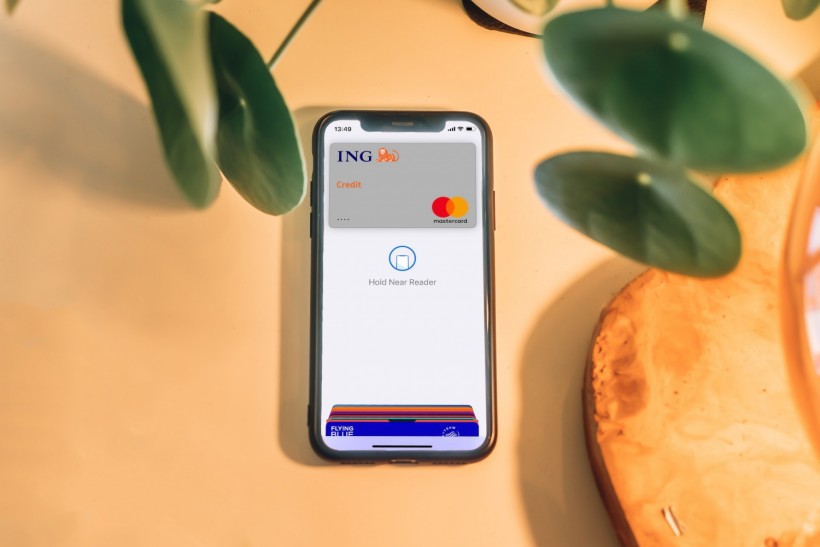
(Photo : CardMapr.nl on Unsplash)
Borrowing money is a fact of life for most people, especially when purchasing big-ticket items like a house. Many agree the process is nerve-wracking, as there's a ton of paperwork to sort out. It's also tricky for lenders, who must ensure all the details are in order. There are myriad rules to follow on both sides.
Fortunately, technology can expedite some of the processes involved in the lending market. With the right tools, the steps applicants must take become clear. Straightforward and streamlined procedures make lenders' jobs easier, too. Tech becomes a vehicle for transforming financial practices from complicated to nearly effortless. Below we'll look at four technology-related trends reshaping the lending market for borrowers and lenders.
1. Digital Platforms Do the Legwork
Ready to apply for a home mortgage or apartment lease? You'll need to show proof of income, plus other paperwork. Home loans usually require more documents, such as evidence of savings account balances and specification of homeowners' association dues. You'll probably need to submit W-2s, copies of your tax returns, and bank statements.
Lenders require these documents for income verification because they can't just take borrowers at their word. Doing so would be a huge risk, jeopardizing the financial integrity of each side. The applicant might rack up debt they can't reasonably repay. And the entity extending credit in good faith will lose expected revenue if the borrower defaults.
As necessary as it is, verifying income can be a burden for everyone. A borrower has to find all their documents, while a lender must ensure they're legit. Sometimes additional paperwork and phone calls to HR departments slow the process down. But digital verification solutions are changing these dynamics and speeding up the process. Applicants can upload required documentation to a centralized platform, which can verify income within seconds instead of weeks.
2. Online Banks Are Becoming More Mainstream
When most people think of banking, they see images of a physical branch office. The familiar lobby and drive-thru employees welcome customers as they make account changes. While physical locations still exist, the trend toward fully digital banks is growing.
Around 27% of U.S. consumers have accounts with online-only financial institutions. These are banks or credit unions without any physical locations. While a customer can't walk into a local office to make a deposit, they can use the ATM networks digital banks maintain. Through partnerships with other financial entities, online banks enable their customers to make in-person deposits and withdrawals through select ATMs. Yet most transactions, such as direct deposits, happen online.
The reasons more banks are going digital include reduced costs and faster procedures. It's much easier for someone to open an account online than it is to walk into a branch office. A client can apply for credit without spending hours with a loan officer. The digital banking model also leverages mobile technology to personalize customer experiences and reinforce relationships.
3. Digital Customer Service Is the Norm
Taking out a loan isn't a walk in the park. From the borrowers' perspective, there's much to learn about how something complex like a mortgage works. They may want to know the impacts of refinancing options, lump sum payments, and amortization schedules. Borrowers might also need to educate themselves about borrowing costs, including loan origination fees. There could be income tax implications, such as mortgage interest payment deductions, to sort out.
With so much to learn, borrowers can bombard lenders with questions. Whether inquiries come at the application stage or a few weeks after closing, there's a real need for consumer education. But that doesn't mean bank employees can devote most of their workdays to managing customers' information demands.
Digital onboarding platforms provide applicants with answers without compromising service levels. As part of the process, clients gain access to online instructions, videos, and automated communications. These materials help explain what customers should know about their loans, including expected payoff dates. Some of these tools are interactive. For example, clients can see how additional principal payments on a mortgage will shorten their payback timelines.
4. The Use of Alternative Lenders Keeps Rising
Conventional banks aren't the only source of loans for applicants. Alternative lenders have been making a splash in the market with the promise of lower consumer costs. Customers who want to minimize expenses find reduced interest rates and loan origination fees attractive. They're not as concerned with the reputations behind big names. These applicants crave convenience and simplicity.
A consumer survey found 40% believe nonbanks can do a better job of helping them with their financial needs. About 30% of respondents who didn't have experience with nonbanks said they would be willing to try them. What these responses reveal is that consumers are moving away from traditional financial institutions. At the very least, more people are open to considering alternatives such as nonbanks, alt lenders, and peer-to-peer loans.
The increase in on-demand lending services is an example of how the market is shifting from conventional lenders. Online shoppers can finance purchases through these services with more sellers. Say they want to buy a fitness tracker but can't afford the full amount at once. They don't have access to a traditional credit card or don't want to pay the high interest rates. Such shoppers can instantly apply for on-demand funds with more favorable payment terms.
Tech Trends in Lending
Taking out a loan doesn't have to be painful, as technology is reshaping the lending market's operations. Consumers get more choices and easy access to information, while lenders can streamline back-end practices. As digital tools evolve, the relationships between credit seekers and lenders may become less contentious. Stronger, smoother partnerships that fully benefit all sides will emerge as the new norm.
* This is a contributed article and this content does not necessarily represent the views of hngn.com








